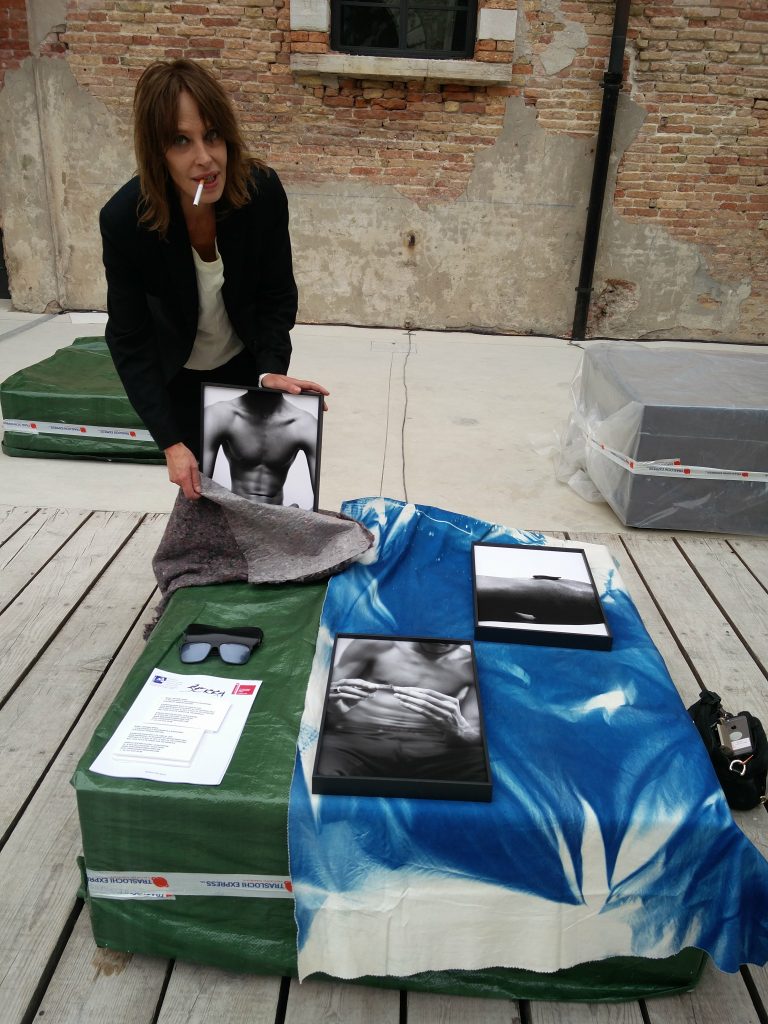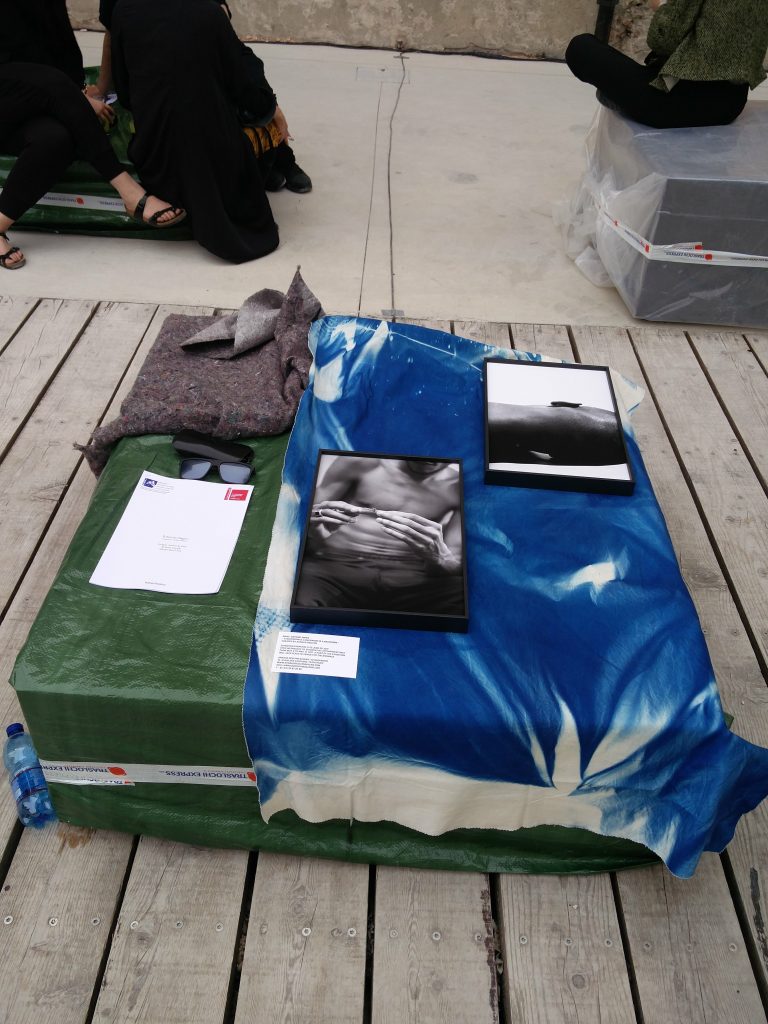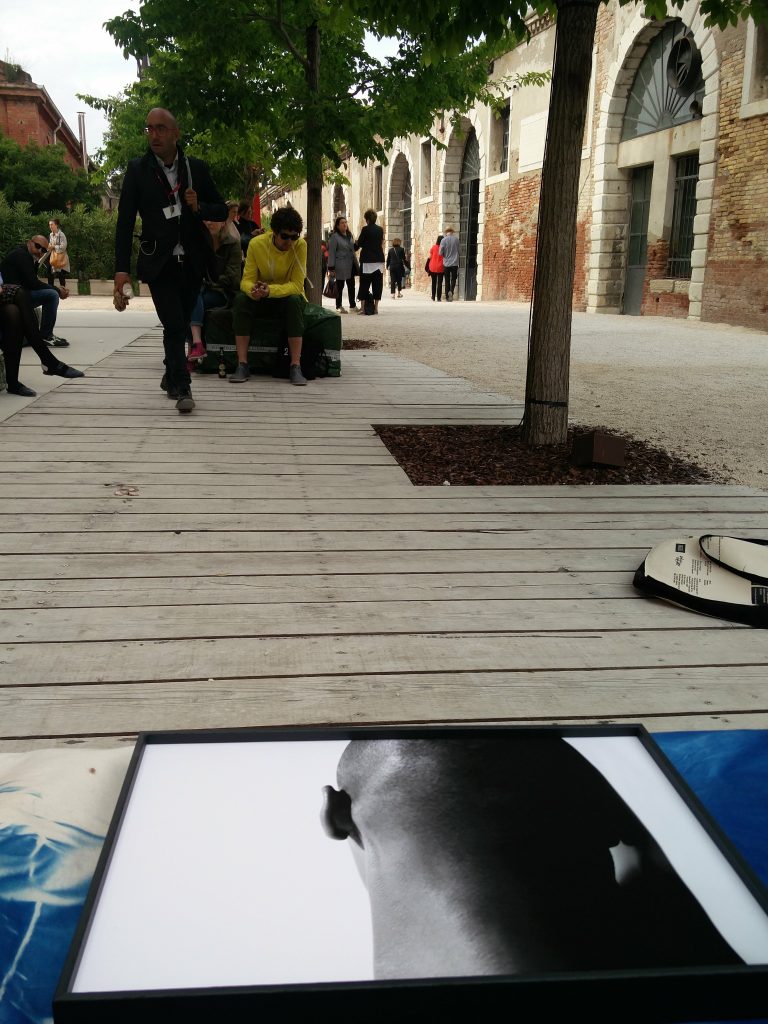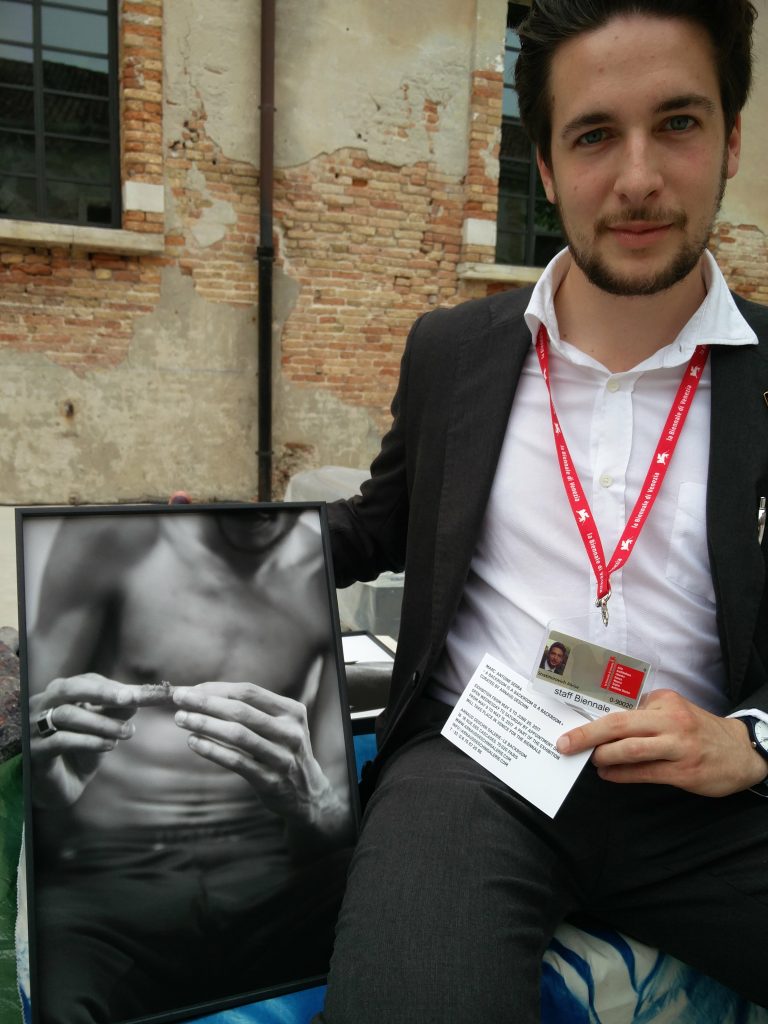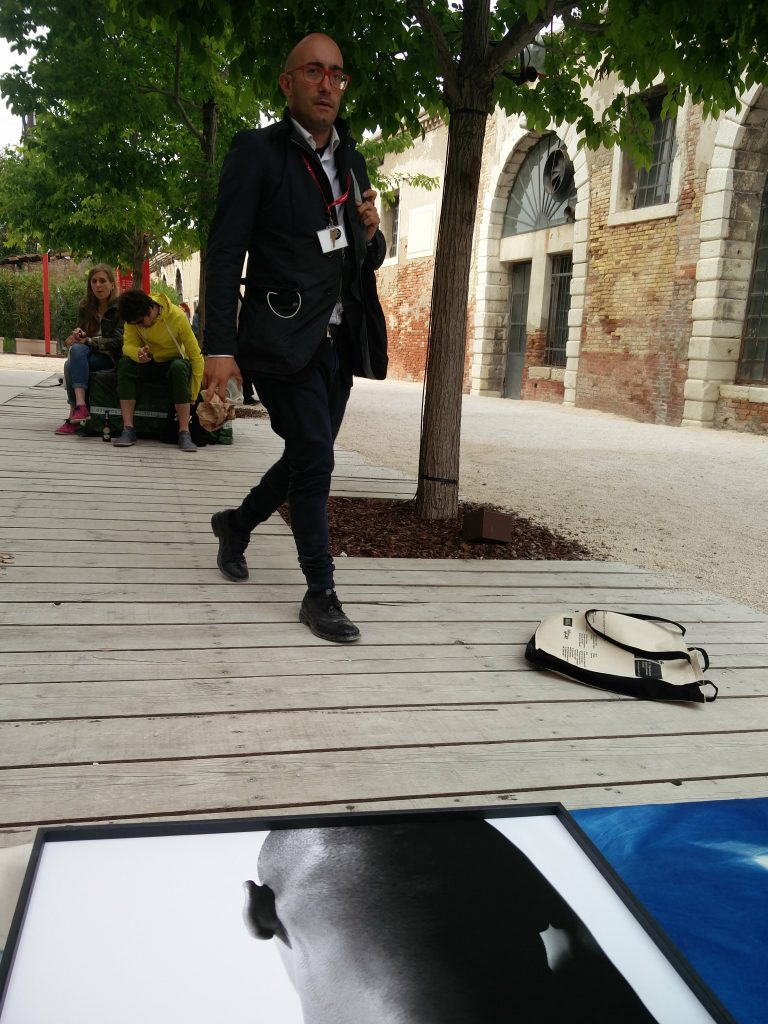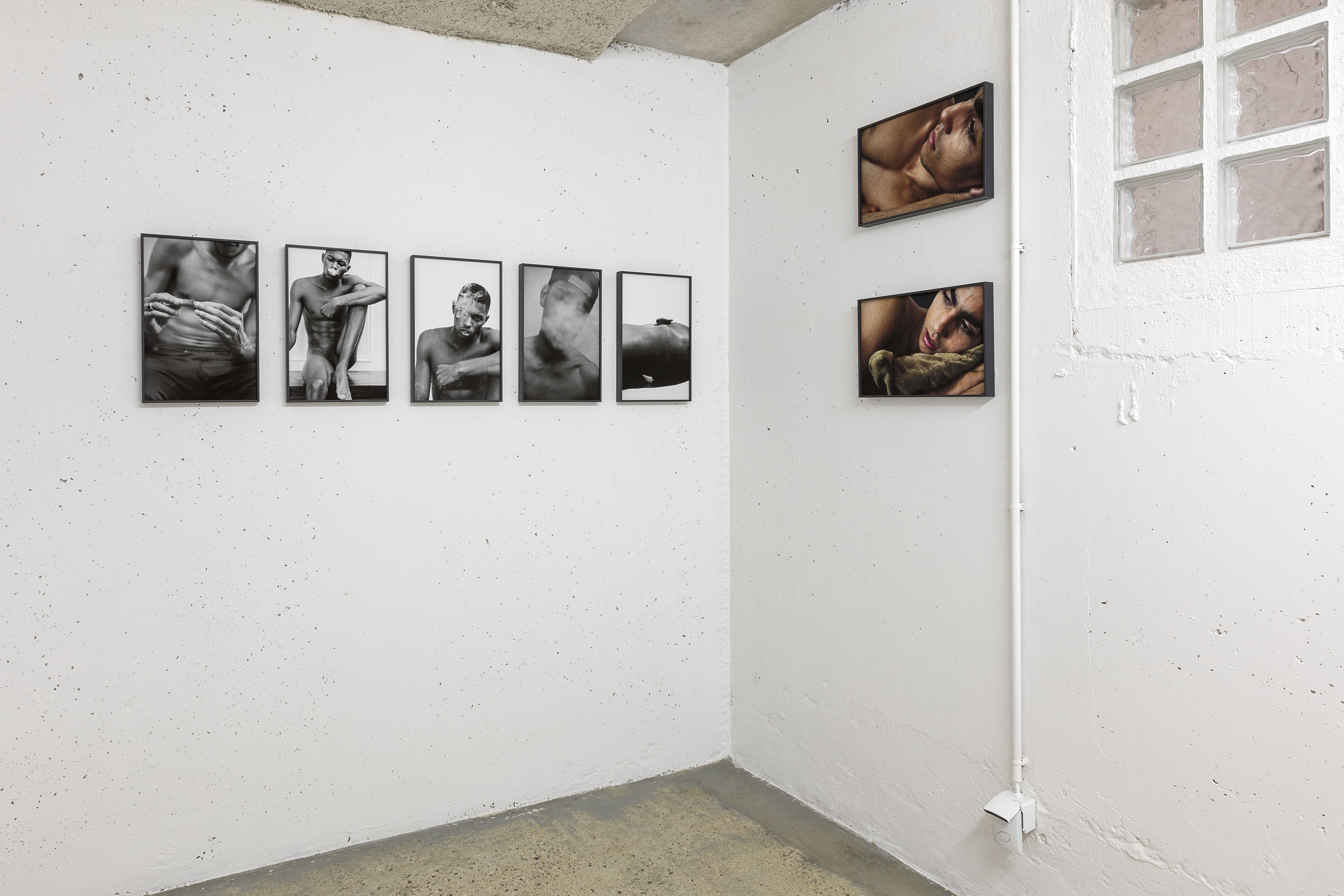05.05—30.06 2017
Du 9 au 15 mai l’exposition s’est déplacée à la biennale de Venise
#performancedegaleriste
➝ Texte de Véra Sassoulitch
➝ Texte de Todd Shepard
➝ Texte de Thomas Doustaly
➝ paris-art, mai 2017
➝ Diacritik, mai 2017
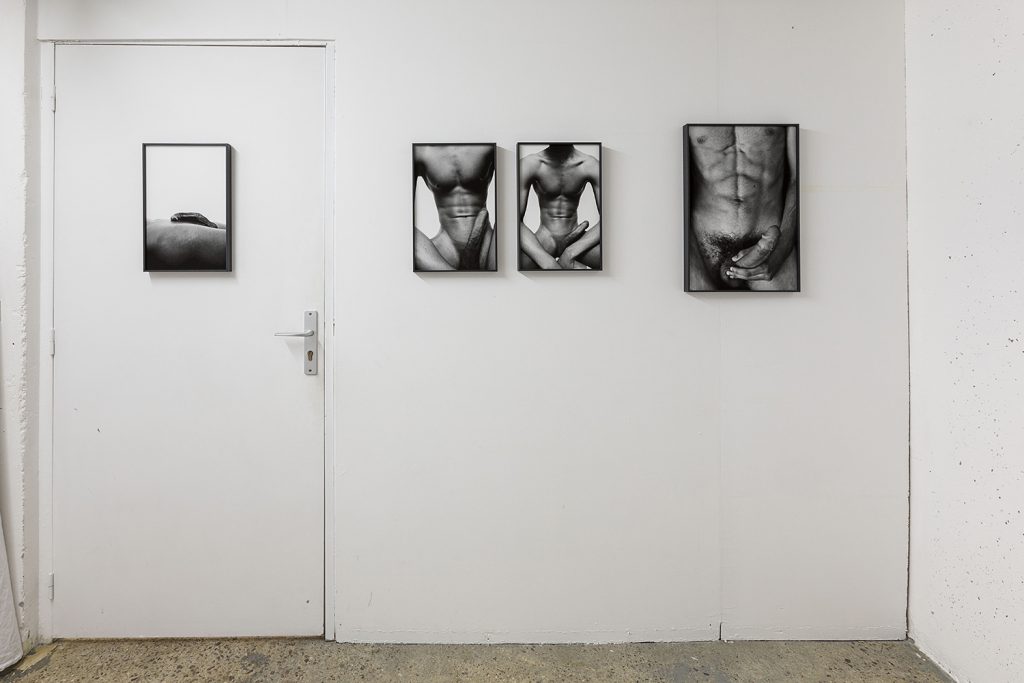
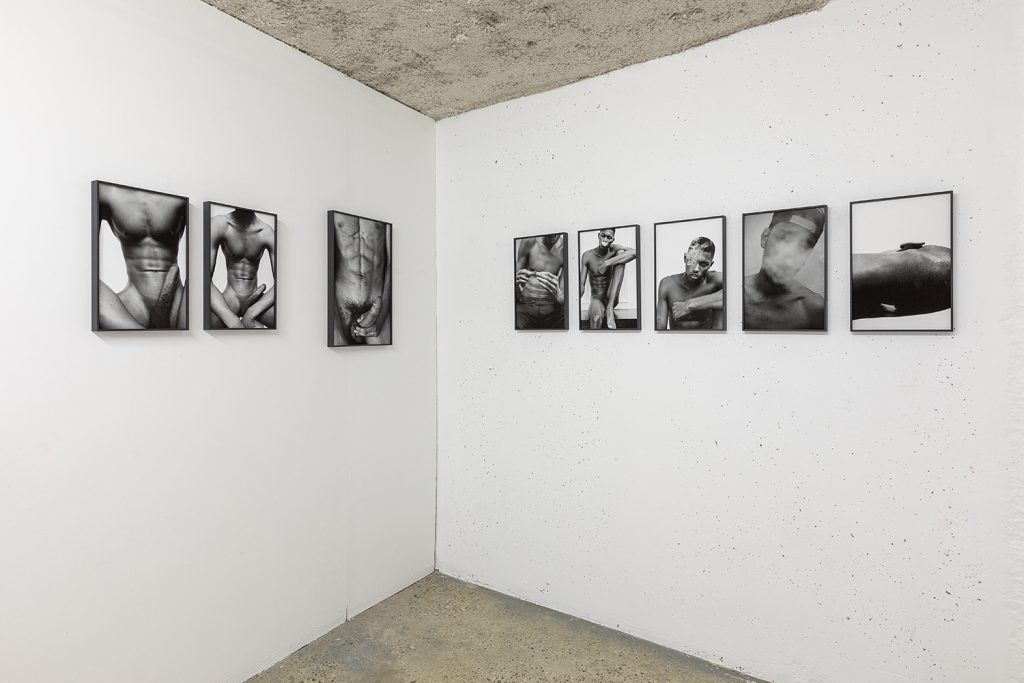
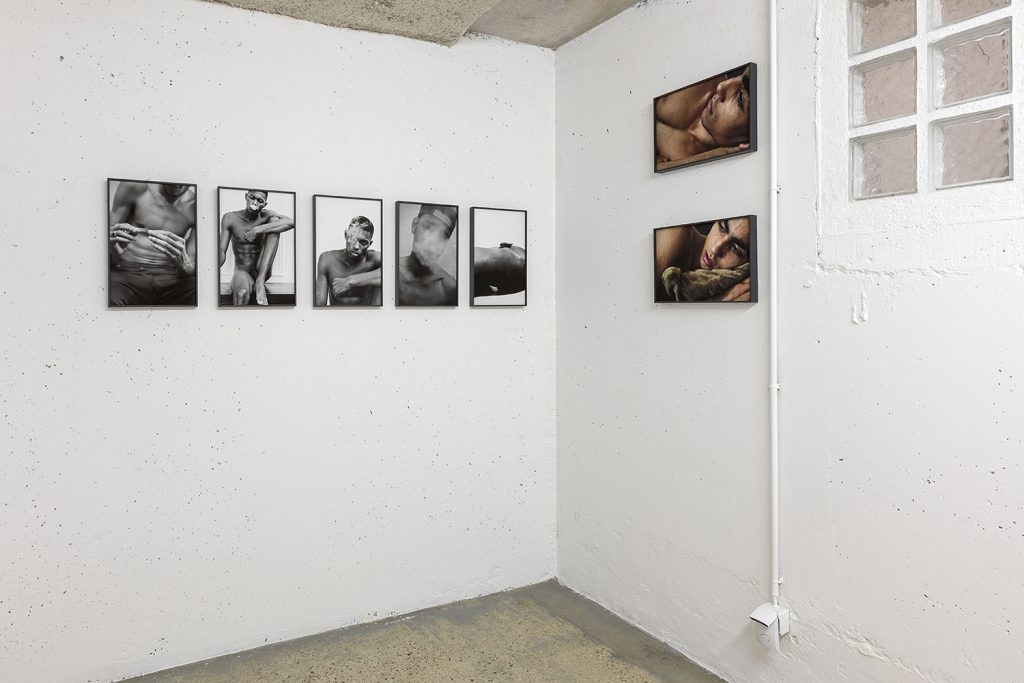
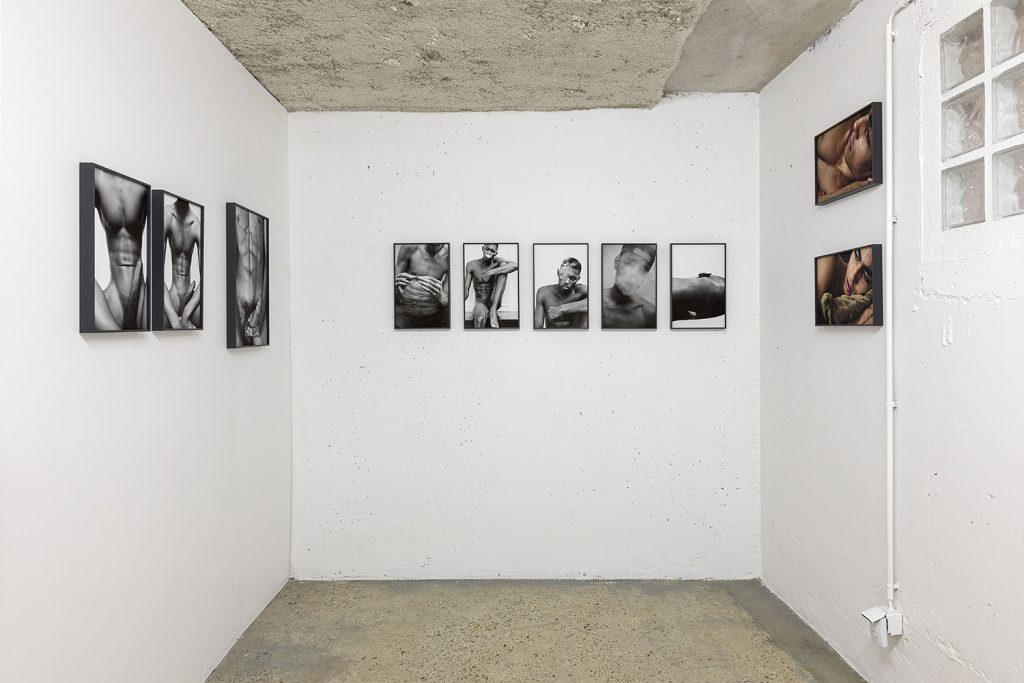
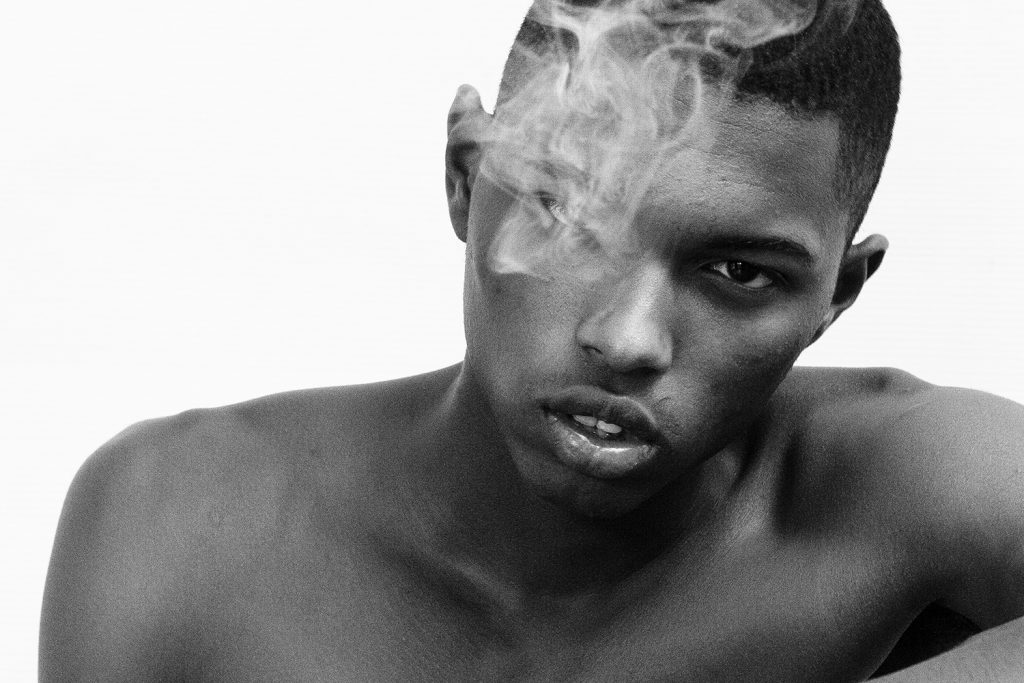
Photos © Romain Darnaud
Si le mot backroom est à lui seul un embryon de fantasmes inséparable des notions de labyrinthe, de pénombre et d’arrière salle, il trouvera ici un traitement d’une miraculeuse profondeur.
En 11 tirages pigmentaires + 1 video (hommage à Walter Benjamin pour son Haschich à Marseille) Marc-Antoine Serra installe de véritables instants qualifiés dont une série de garçons sont les héros. Que révèlent ces corps déposés, d’une chasteté-obscénité si pénétrante qu’elle dérange, attendrit et soulage les regards qui s’y posent ?
Denis Roche avait raison : « Ce qu’il y a de formidable dans la photographie c’est tout ce qu’il y a autour ». Ici, c’est bien de l’avant d’un autour qu’il s’agit, celui là même qui touche à l’existence de ces « garçons sauvages » dont un Pasolini ou un Burroughs aurait pu rêver. Déplacés, suspendus au creux d’un intempestif décor effacé (la ville de Marseille) leurs visages comme leurs sexes (assoupis ou dressés) dérangent (dégenrent) l’identité même du désir. L’énigme du backroom rejoint ici celle du travail de la camera oscura avec, en balayage, un usage du trouble peu commun. Alors se pose une étrange question : sans glory hole, ces corps glorieux s’adressent-ils à un regard masculin ou féminin ?
Ici, la photographie, sa pratique (comme le hors champs qu’elle soulève) se trouve à la fois confrontée à la troublante question de l’identité sexuelle du regard désirant comme au contexte politique actuel de la circulation des corps. (…)
Véra Sassoulitch
In the posthumously published Incidents (1987), Roland Barthes organized much of what he wrote about his experiences in Tangiers around what he termed “les deux Hs,” hashish and homosexuality. While the essayist offered very explicit descriptions of both, Marc-Antoine Serra, in the images he present in Backroom, works in the much richer vein of what the literary critic Joseph Boone has identified as the homoerotics of Orientalism, a figurative world in which the pungent smoke of hash resin has long been a crucial factor.
Associations between foreignness and exaggerated eroticism, even perversity, exist in discussions about sexuality in most modern societies. Yet in Western countries, notably France, the links made between the Muslim world and the homoerotic, even the homosexual, have been particularly intense. This has much to do with the French occupation of Algeria (1830-1962), and, later, Tunisia (1881-1956) and Morocco (1912-1956). It is part of the more general phenomenon that Edward Said named Orientalism, in which “Western” descriptions of the (Muslim) “Orient” insisted on stark differences between Easterners and Westerners in order to anchor Western claims to normalcy and superiority.
Representations of different ways of living male sexuality promise both excitement and danger, and erotic photographic and cinematic images of male subjects have made great use of Orientalized bodies. The Baron von Gloeden dressed several of the Sicilian boys he photographed so assiduously in “Arab” garb. The late 1920s French pornographic film “Mektoub, Fantasie Arabe” turned its focus briefly from harem girls to show the sexual domination of the French tourist “Dickie” by the sheik Abd-el-Zab and his male servant. Numerous films by Jean-Daniel Cadinot also explored this terrain.
The young men in this collection of Serra’s photographs compellingly bring together two distinct registers with which previous images long played: the hypervirile, on one hand, the ephebe, on the other. There is nothing here, however, of either the brute or the passive effeminacy that usually inheres in one or the other. The titles but also the separation between the young men’s eyes and their (circumcised) penises situate them clearly in present-day France. Their nudity is only frontal and it fulfills only some racialized fantasies. These are images for a postcolonial France, of a society where, from “l’affaire Théo” to “l’affaire Meklat” and in the fulminations of Zemmour, Renaud Camus, or Houellebeq and the ruminations of Edouard Louis or Kamel Daoud, young men linked to Africa, North or sub-Saharan, continue to draw much attention.
Todd Shepard
– Tu vas aller voir les photos de Marc-Antoine ?
J’y suis. Viens ! C’est beau !
– Ah oui ? C’est quoi en fait ?
Des photos de mecs à poil qui fument des joints ou qui bandent. Avec des titres intellos comme dans celle où un mec tient sa bite et ça s’appelle « Le rapport du langage aux choses ». Ça m’a fait rigoler. C’est pas du male nude à la con.
– Mais c’est quel genre de mecs ?
Les prénoms c’est Medhi, Mboko ou Yasin. Tous la vingtaine. Tu sais bien qu’il aime les noirs et les Arabes.
– Comment ça ? Seulement eux ? Comme modèles ou comme amants ?
Comme modèles, comme amants, comme rouleurs de joints, tout ça à la fois ou séparément j’imagine. On nous raconte pas leur vie sexuelle dans les cartels. Le seul lien certain c’est la drogue. Douce.
– Ah oui bien sûr. Mais il vit où Marc-Antoine maintenant ?
À Marseille.
– Il est retourné à Marseille ?
Il a quitté Paris en tout cas. D’ailleurs ça m’a donné envie de revoir « Retour à Marseille » de René Allio. Y’a Raf Vallone dedans, c’est en 1980, c’est très beau.
– Ah oui… Mais quel rapport ?
Le destin. Le destin marseillais.
– Ça finit bien ce film ?
J’ai oublié. C’est justement pour ça que je veux le revoir. Tu viendras ?
– Chez toi ?
Oui. On invitera Marc-Antoine, vous roulerez des joints et il te dira pourquoi Walter Benjamin.
Thomas Doustaly
